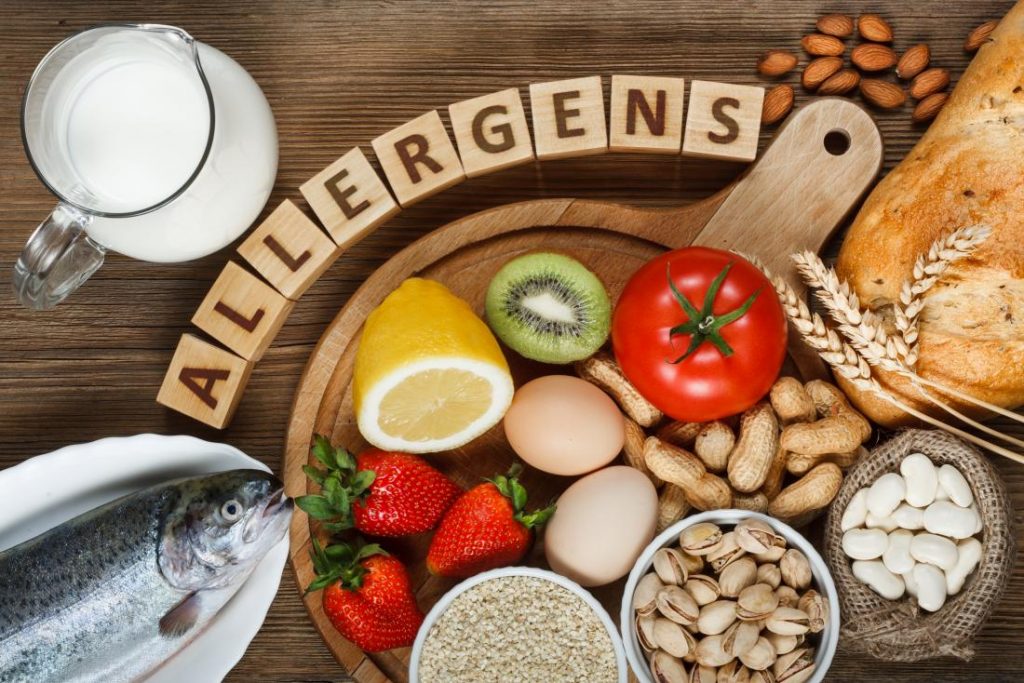What is an allergy?
An allergy occurs when the immune system reacts to something in the environment (the allergen) that would normally be harmless. You may also have an allergy to the bites or stings of insects, or to certain medications. In an allergic reaction, the immune system produces allergy antibodies specific to the allergen encountered. Confirmation of food allergy by an allergy specialist is required. If you think you may have a food allergy, book in for a discussion with your GP as soon as possible.
In Australia and New Zealand, food allergy occurs in approximately 10% of infants, 4-8% of children and 2% of adults. The most common triggers include egg, cow’s milk, peanut, tree nut, sesame, soy, fish, shellfish, and wheat. Other environmental allergens may include pollen, animal dander and dust mite. Some allergic reactions can be severe, causing life-threatening reactions known as anaphylaxis (Australian Society of Clinical Immunology and Allergy (ASCIA), 2019). Although food allergy is relatively common, deaths from anaphylaxis due to food allergy is rare. Most deaths can be prevented by careful allergen avoidance and immediate administration of an adrenaline autoinjector (EpiPen).
Symptoms
Mild symptoms (often unrecognised)
- Infantile colic
- Reflux of stomach content
- Eczema
- Chronic diarrhoea
- Failure to thrive in infants
Mild-moderate symptoms
- Swelling of the face, lips, and/or eyes
- Hives or welts on the skin
- Abdominal pain and/or vomiting
More severe symptoms (anaphylaxis)
- Difficulty breathing
- Noisy breathing
- Swelling of the tongue
- Swelling/tightness of the throat
- Difficulty talking
- Wheeze or persistent cough
- Persistent dizziness and/or collapse
- Pale and floppy (in young children)
Diagnosis
To investigate potential food allergies, your GP may request skin or blood tests to find the triggers. Even if the tests show some allergic response to allergens, they cannot determine whether your response will be mild or severe. In some cases, a person can test positive for a food allergy yet still be able to eat that food without any symptoms. Sometimes a temporary elimination diet under close medical supervision will be needed, followed by food challenges to identify the cause (Australian Society of Clinical Immunology and Allergy (ASCIA), 2019).
It is important to note that there are several unproven allergy tests including cytotoxic food testing, Vega testing, kinesiology, iridology, and hair analysis. These methods of analysis have not been scientifically proven and should be avoided (Health Direct, 2020). Treatment based on non-scientific analysis may lead to ineffective and expensive treatments, and delay effective therapies.
Treatment
Food allergies are generally treated with careful allergen avoidance. This involves carefully reading food labels, taking care when eating out and avoiding cross-contamination during food preparation. Additionally, individuals with an allergy should always carry an adrenaline autoinjector (EpiPen) and their ASCIA Action Plan for Anaphylaxis and know what to do should a reaction occur. Food allergies should be continually managed under the guidance of your GP and a clinical immunologist or allergy specialist.
Food allergy can be outgrown, most children with an allergy to cow’s milk, soy, wheat or eggs will outgrow their allergy (Australian Society of Clinical Immunology and Allergy (ASCIA), 2019). However, allergy to peanuts, tree nuts, sesame and seafood is more likely to continue into adulthood. Additionally, allergies developed in adulthood usually persist.
The Information in the article has been adapted from:
Australian Society of Clinical Immunology and Allergy (ASCIA). (2019). Food Allergy. Retrieved from Australian Society of Clinical Immunology and Allergy (ASCIA): https://www.allergy.org.au/patients/food-allergy/food-allergy
Health Direct. (2020). Food Allergies. Retrieved from Health Direct: https://www.healthdirect.gov.au/food-allergies
This article was written by April Stevens BSc. MD student.
28th October 2020.

